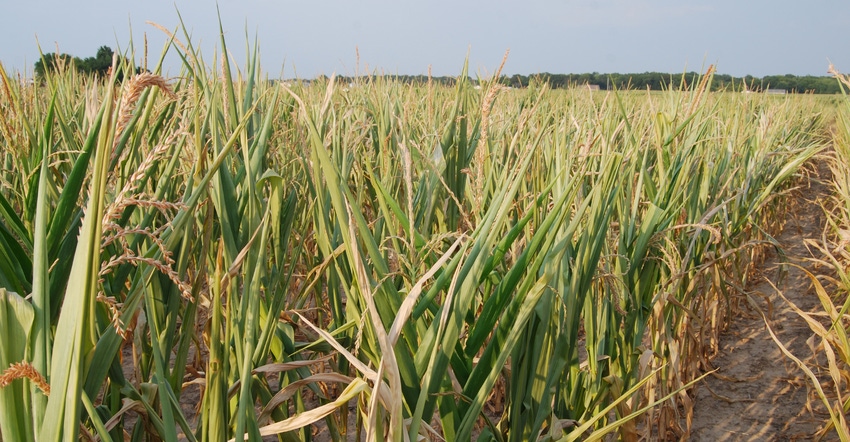July 8, 2021

Despite the cooler conditions and precipitation in some parts of Iowa recently, the U.S. Drought Monitor categorizes most of Iowa as being in moderate to severe drought. As we approach tasseling, more and more questions around fungicides are being asked.
All diseases managed by fungicides (gray leaf spot, northern corn leaf spot, rusts, tar spot) are favored by moisture. While some initial infections may have occurred in June, the 30- and 90-day outlooks for Iowa by the Midwest Climate Hub suggest warmer conditions, with near-normal to below-normal precipitation. This means any infections that may have occurred may not progress or produce inoculum to further disease development.
Most research data suggest fungicides are most profitable when disease is present. For example, a summary from the Corn Disease Working Group found when disease severity was greater than 5% at R5, the average yield response from a fungicide application was 9.6 bushels per acre. However, the average yield response was only 1.5 bushels per acre when disease severity was low (<1%). Similarly, a 2011 meta-analysis by multiple universities in the Midwest and South (Paul et al.) reported that foliar fungicides were unlikely to be profitable when foliar disease severity was low. Given the current weather outlook, it is likely that disease severity will be low in Iowa in 2021. Consequently, a fungicide application to manage disease may not be warranted.
Plant health benefits
Various plant physiological benefits have been attributed to applying a fungicide, including reduced stomatal conductance and improved water use efficiency. However, it is difficult to find consistent evidence that applying a fungicide under drought conditions to reduce stress in corn may be profitable. The 2012 and 2020 growing seasons were dry, with almost no disease. The yield response of corn to a foliar fungicide application in on-farm trials from 2012 by the Iowa Soybean Association On-Farm Network was 0.8 bushels per acre. Similarly, in Pioneer on-farm trials, a 2.5-bushel-per-acre yield response was measured in 2011 and 2012, and a 0.5 bushel-per-acre yield response in 2020. In experimental plot corn fungicide trials done by my lab in 2020 at six Iowa State University Research Farms across the state, the average yield response for a fungicide application at VT/R1 was 0.5 bushel per acre. Conversely, at these same research farms in 2012, the mean yield response was 5.5 bushels per acre. Since disease severity was low, it is unclear why the 2012 data were more supportive of a fungicide application at VT/R1 under drought conditions.
In summary, there are few data that suggest an application of a fungicide to drought-stressed crops would be profitable. In the few areas of Iowa that have had significant precipitation, it would be prudent to scout for disease. Furthermore, consider the susceptibility of the hybrid to gray leaf spot and northern corn leaf blight, and review the weather outlook.
If you do choose to spray a fungicide, leaving a couple of unsprayed strips in the same field could be informative come the end of the growing season. And I’d be very interested to hear what you find
Robertson is a professor of plant pathology and microbiology at Iowa State University.
Source: ISU Integrated Crop Management, which is responsible for the information provided and is wholly owned by the source. Informa Business Media and its subsidiaries aren't responsible for any of the content contained in this information asset.
You May Also Like




